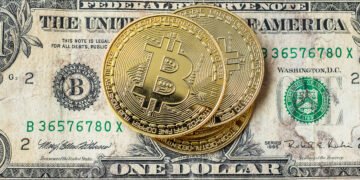A remarkable transformation is underway in the American financial landscape as the once-separate worlds of cryptocurrency and traditional banking rapidly converge under the second Trump administration. This blurring of boundaries is accelerating as regulatory barriers fall and both sectors recognize potentially lucrative opportunities in embracing elements of the other’s business models.
Crypto Companies Eye Banking Licenses
In a significant development that highlights this trend, several major cryptocurrency firms are actively exploring or planning to pursue U.S. banking licenses, according to a recent Wall Street Journal report. The list of companies includes some of the most established names in the digital asset space: Circle, BitGo, Coinbase Global, and Paxos.
When contacted about these plans, a Coinbase spokesperson confirmed the company’s interest in a banking charter, telling Yahoo Finance: “This is something Coinbase is actively considering but has not made any formal decisions yet.” This measured statement from the largest publicly traded cryptocurrency exchange in the United States suggests serious deliberation is underway regarding this potential strategic expansion.
The pursuit of banking licenses by crypto firms represents a dramatic evolution in their business strategies. Historically, many cryptocurrency companies positioned themselves as alternatives to the traditional banking system, emphasizing decentralization and freedom from conventional financial constraints. The shift toward seeking regulatory approval and integration with the established banking framework signals a maturing approach and recognition of the benefits that come with operating within regulated structures.
Traditional Banks Embrace Digital Assets
Simultaneously, established financial institutions are increasingly open to incorporating cryptocurrency and blockchain technology into their operations. Perhaps most notably, Brian Moynihan, CEO of Bank of America—the nation’s second-largest lender—stated in February that his institution would consider issuing its own stablecoin if appropriate legislation were enacted. “If they make that legal, we will go into that business,” Moynihan declared, signaling a remarkable willingness from a banking titan to enter the digital asset space.
Bank of America is far from alone in this exploratory stance. Other major financial players testing or considering deeper involvement with stablecoins include Standard Chartered, PayPal, and Stripe. Even Fidelity Investments, one of the world’s largest asset managers with trillions under management, has begun testing its own stablecoin, according to reporting from the Financial Times.
PayPal has emerged as the largest fintech company to issue a stablecoin thus far. The payments giant recently announced plans to offer users a 3.7% annual yield for holding its stablecoin (PYUSD) on its Venmo platform. This move represents a significant step in making digital assets more attractive to mainstream consumers by offering tangible financial benefits for participation.
In another sign of growing interconnection, Circle—issuer of USDC, the world’s second-largest stablecoin by market capitalization—announced that several major international banks, including Deutsche Bank, Santander, and Standard Chartered, are advising the company on developing a new cross-border payments network. This initiative is being positioned as a potential competitor to SWIFT, the longstanding backbone of international banking transactions.
Regulatory Shifts Under Trump 2.0
The convergence between these once-separate financial domains is gaining momentum due to significant regulatory changes implemented by the Trump administration. Last week, the Federal Reserve took a major step by rescinding previous guidance that had cautioned lenders against involvement in cryptocurrency-related activities. This policy reversal means that banks no longer need to seek advance approval from the Fed before expanding into crypto services—removing a substantial bureaucratic hurdle.
This regulatory relaxation comes amid broader efforts by the administration to create a more accommodating environment for both cryptocurrency innovation and banking deregulation. President Trump has signaled strong support for the digital asset industry, notably hosting a White House Crypto Summit on March 7, 2025, where he received applause from industry leaders.
The administration is also working with Congress to develop a regulatory framework for stablecoins—cryptocurrencies designed to maintain a stable value by pegging to assets like the U.S. dollar. This prospective legislation may be motivating some crypto firms to pursue banking licenses, as the proposals under consideration could require stablecoin issuers to obtain charters or specialized licenses.
Circle’s Chief Strategy Officer, Dante Disparte, addressed this consideration in a recent post on X (formerly Twitter): “Circle does not intend to become a bank or any other kind of an insured depository institution. We do intend to comply with a future U.S. regulatory framework for payment stablecoins, which may require registering for a federal or state trust charter or other nonbank license.”
Beyond anticipating regulatory requirements, obtaining banking charters might offer crypto companies a strategic hedge against potential legislative delays while simultaneously enhancing their legitimacy in the broader financial ecosystem. As Daniel Hartman, a financial sector-focused attorney at law firm Nutter and former legal counsel at the Federal Reserve Bank of Boston, told Yahoo Finance: “A bank charter is a privilege. Getting welcomed into that system adds an immense amount of credibility.”
Historical Context: The Rocky Road to Convergence
The current rapprochement between traditional banking and cryptocurrency represents a significant reversal from recent years, when attempts at integration faced substantial headwinds. During the pandemic, some banks had begun offering crypto-targeted banking services as digital assets grew in popularity, finding this niche temporarily lucrative.
However, this nascent trend was severely disrupted by a series of high-profile failures in 2022 and 2023. The collapse of crypto exchange FTX in late 2022, followed by the failures of crypto-friendly lenders Silvergate and Signature Bank in 2023, created a regulatory taboo around cryptocurrency engagement for traditional financial institutions. Regulators became highly skeptical of banks seeking to expand into digital asset services, effectively halting the convergence.
The election of President Trump for a second term has dramatically changed this dynamic. The new administration has signaled a distinctly different approach to financial regulation, emphasizing innovation and market freedom while reducing bureaucratic constraints. This shift in the regulatory environment has emboldened both sectors to explore previously abandoned integration strategies.
New Players and Fresh Innovation
The evolving landscape has also spurred new entrants combining elements of both worlds. Last month, World Liberty Financial—a crypto startup backed by President Trump and his sons—unveiled plans to mint its own U.S. dollar-pegged stablecoin in partnership with BitGo. This high-profile venture, with its direct connections to the President, exemplifies how quickly the integration of traditional finance and cryptocurrency has accelerated in the current political environment.
Meanwhile, established fintech companies are expanding their cryptocurrency offerings. Stripe, a leading payment processor, acquired stablecoin platform Bridge in February and is now testing stablecoin payment products for companies based outside the U.S., UK, and European Union. Stripe’s CEO, Patrick Collison, expressed enthusiasm about this development in a recent post on X: “We’ve wanted to build this product for around a decade, and it’s now happening.”
Coinbase has also been working to increase adoption of PayPal’s PYUSD stablecoin by waiving fees for users looking to buy or sell the asset on its platform. This collaboration between one of the largest cryptocurrency exchanges and a major payment provider further illustrates the breaking down of traditional barriers between digital assets and conventional finance.
The Pace of Change
The speed of these developments has surprised even industry insiders. Mike Belshe, CEO of BitGo, remarked on the rapid transformation: “If you asked anybody six months ago, nobody really would have thought we would be getting here, but now we’re here.” This sentiment captures the extraordinary velocity with which the landscape is shifting as regulatory constraints ease and business opportunities emerge.
The pace of change reflects both pent-up demand for innovation that was previously constrained by regulatory concerns and the competitive pressures that arise when markets open to new possibilities. As barriers fall, companies on both sides of the traditional finance-cryptocurrency divide are racing to stake claims in newly accessible territory.
Looking Ahead: Implications and Challenges
As the financial industry navigates this period of convergence, several important questions remain unanswered. Will the integration of banking and cryptocurrency lead to greater stability and mainstream adoption of digital assets? Or might it dilute the decentralized principles that attracted many to cryptocurrency in the first place?
For traditional banks, the challenge involves balancing innovation with risk management as they venture into the volatile world of digital assets. For cryptocurrency companies, obtaining banking licenses means accepting heightened regulatory scrutiny and compliance obligations that may run counter to their original ethos.
Despite these unresolved questions, the trajectory appears clear: the once-sharp boundary between traditional banking and cryptocurrency is rapidly dissolving. Under the regulatory approach of Trump’s second administration, we are witnessing the emergence of a more integrated financial ecosystem that incorporates elements from both worlds.
This great convergence promises to reshape how Americans interact with money and financial services in the coming years. Whether through banks offering cryptocurrency services, crypto firms acquiring banking capabilities, or entirely new hybrid institutions, the financial landscape is undergoing a transformation that would have seemed improbable just a few years ago. As regulatory barriers continue to fall and innovation accelerates, the distinction between traditional finance and the world of digital assets may soon become merely historical.







